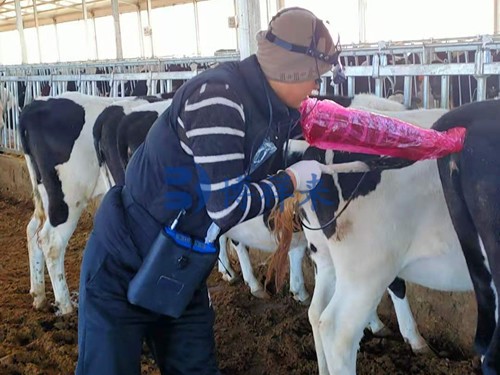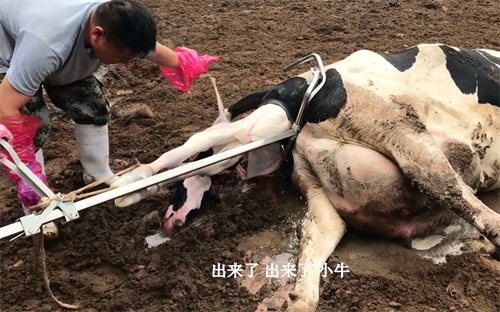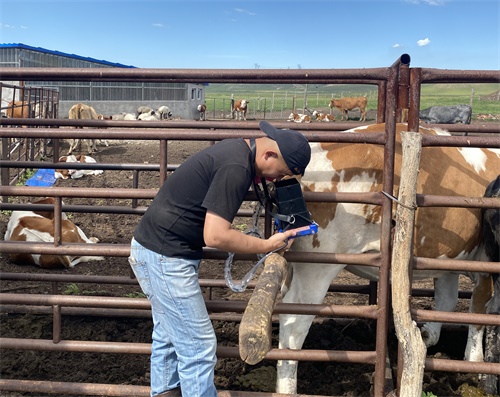On dairy farms, mastitis is the enemy that silently chips away at milk quality, cow comfort, and farm profitability. It doesn’t always shout with obvious signs—often, by the time milk clots or udder swelling shows up, the infection has already progressed. That’s where portable ultrasound steps in—not as a futuristic add-on, but as a practical, barn-friendly tool to catch mastitis before it gets serious.

Many farmers still rely on touch, visual cues, or even milk strip tests. But early-stage mastitis often escapes those methods. What experienced veterinarians and dairy managers across countries are finding is that portable ultrasound isn’t just for reproductive work anymore. When used regularly, especially in high-risk cows or herds with a history of udder issues, it can pick up changes in udder tissue before clinical symptoms appear.
Why Early Mastitis Detection Matters
Early detection isn’t just about treating cows sooner—it’s about minimizing damage to the udder tissue, reducing antibiotic use, and preventing milk yield losses that sneak up over time. Subclinical mastitis, in particular, can go unnoticed for weeks while gradually impacting productivity. It can lower milk output by up to 15%, even in cows that seem healthy from the outside.
In many European and North American dairies, producers have started integrating portable ultrasound scans into routine health checks, especially post-calving and during high-risk periods like peak lactation or seasonal transitions.
What the Ultrasound Actually Shows
Using a portable B-mode ultrasound, vets and technicians can image the internal structure of the udder. Healthy mammary tissue has a uniform echotexture—smooth, consistent, and free of fluid pockets. With early-stage mastitis, the structure changes subtly: small hypoechoic (dark) regions appear, representing fluid accumulation or inflammatory swelling. Sometimes there’s increased echogenicity around milk ducts, indicating early immune response.
These subtle shifts often happen before external signs like hardness, swelling, or heat show up. That’s what makes ultrasound so powerful—it lets us see what the hands can’t feel yet.
A Typical On-Farm Scenario
Imagine walking into a 200-cow barn. You’re focused on a high-producing Holstein who’s just calved. Her milk seems fine, and the udder looks okay. But she had mastitis in a previous lactation. You pull out a portable ultrasound like the BXL-V50, swipe some gel, and scan her udder quarters. On the lower right quarter, you notice a pocket of mixed echogenicity—something you wouldn’t have caught by hand or eye.
She gets flagged for preventive treatment. Within a few days, her inflammation resolves, and you’ve avoided an antibiotic case, a tank discard, and a hit to her performance. Multiply that scenario across a herd, and you’re looking at a serious gain in herd health and bottom-line numbers.
Global Adoption: What Other Countries Are Doing
In the U.S., especially in large-scale operations across Wisconsin and California, vets have started using portable ultrasound systems not only for reproduction but also for tracking udder health. A growing number of producers are reporting fewer full-blown mastitis cases and better culling decisions when ultrasound is part of the daily routine.
In New Zealand, where pasture-based systems make mastitis detection trickier due to less frequent cow handling, some progressive dairy farms use portable ultrasound during the walk-through at milking time. Quick checks help spot issues even before the milk filters or conductivity meters raise flags.
European countries like the Netherlands and Germany are also adopting the tech, encouraged by pressure to reduce antimicrobial use. Because ultrasound can detect udder inflammation before it gets severe, farmers can try supportive therapies first and avoid unnecessary antibiotic courses.
Not Just for the Sick Cows
One of the biggest shifts in thinking is that ultrasound isn’t only for "problem cows" anymore. Some farms do weekly checks on first-lactation animals or monitor all cows in the first 30 days postpartum. These are times when cows are most vulnerable to udder infections, and early detection saves days of recovery, gallons of lost milk, and expensive vet bills.
In herd management software systems, some operators are even logging ultrasound data—linking inflammation scores to milk records, SCC (somatic cell count) trends, and treatment histories. This adds a new layer of precision to managing udder health.
Benefits That Show Up in the Numbers
Several international trials, including one from the University of Guelph in Canada, reported that integrating regular ultrasound checks reduced clinical mastitis cases by over 20% and lowered average SCC across the herd. In herds with high SCC issues, the improvement in milk bonuses alone made up for the ultrasound equipment cost within one lactation cycle.
Here are some of the benefits that users consistently report:
Earlier detection = fewer antibiotics
Reduced culling rates = longer productive life per cow
Lower SCCs = higher milk quality premiums
Targeted treatment = better outcomes and cost control
Peace of mind = knowing you’re not missing silent cases
Choosing the Right Portable Ultrasound
Not all machines are suited for on-farm work. Portability, durability, battery life, and image clarity are key. Units like the BXL-V50, built for veterinary applications, tick those boxes with features like a waterproof case, high-resolution screen, and long operating time. They’re designed to work in real-world farm conditions—mud, dust, humidity, and all.
Some models also come with presets for udder scanning, so the learning curve for dairy staff is less steep. That means more people on your team can get involved in monitoring, not just the vet.
Barriers to Adoption—and How to Overcome Them
Cost is often cited as a concern, but the ROI becomes clear when you factor in reduced treatment expenses and milk losses. Another barrier is training, but several universities and veterinary associations now offer short workshops on dairy ultrasound use—often with hands-on practice.
The biggest shift is mindset. Moving from reactive to proactive udder health management doesn’t happen overnight. But with tools like ultrasound becoming more affordable and user-friendly, the transition is starting to feel less like a luxury and more like a necessity.
Final Thoughts
Portable ultrasound is changing how we think about mastitis. Instead of waiting for signs to appear—or worse, relying on strip tests once milk quality has already dropped—we can now look inside the udder and act sooner.
The best part? It fits into daily routines without disrupting workflow. Whether you're running a small family farm or managing thousands of cows, having this kind of visibility means better health for your animals, better returns for your business, and fewer surprises in the bulk tank.
For those of us in the trenches of daily dairy life, it’s not about flashy tech—it’s about smart, simple tools that actually help. And when it comes to mastitis, ultrasound might just be the sharpest one in the toolbox.









